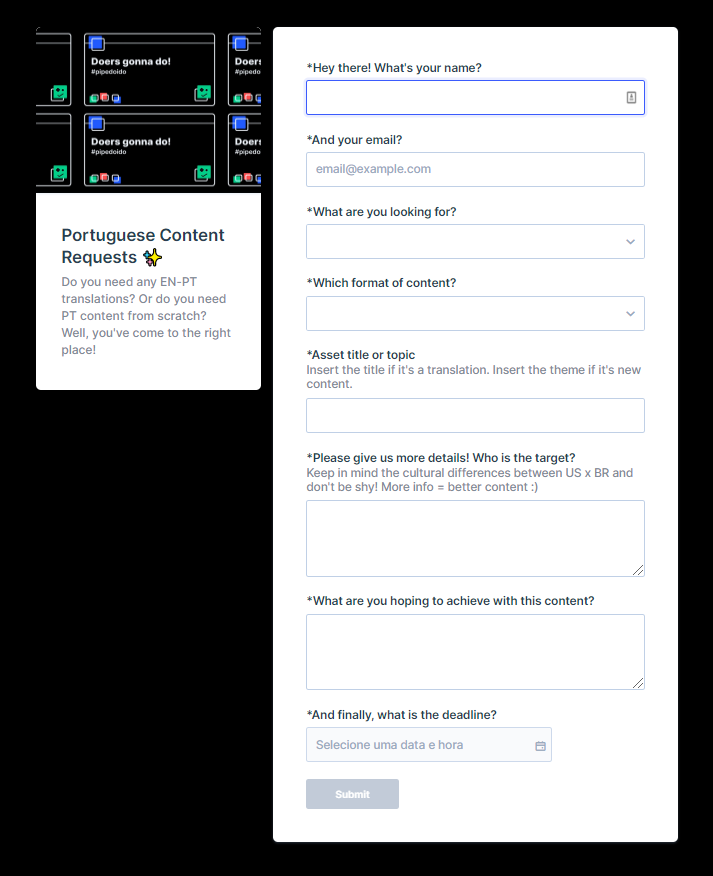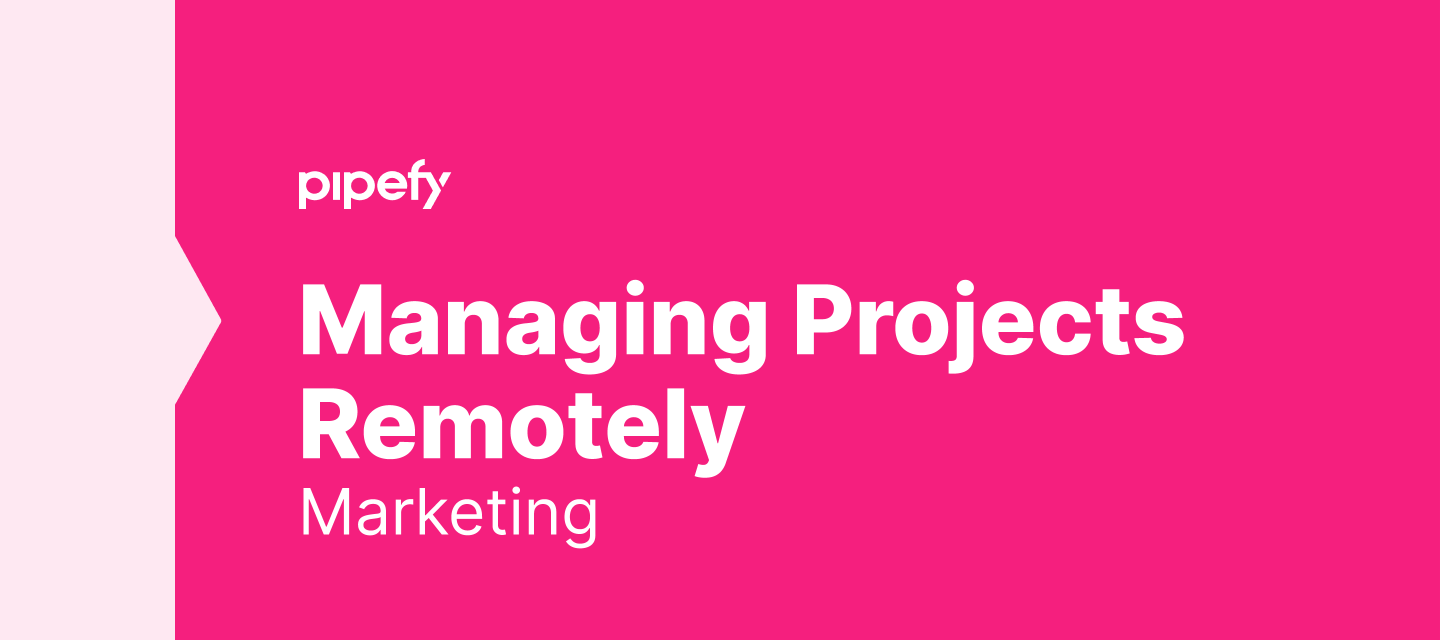Managing Marketing projects and processes is already a challenge. Doing this remotely naturally increases the level of difficulty. But what if I told you it doesn't have to be that hard? Yeah. With Pipefy, this can be a much simpler task than you think! Follow me:
Great marketing has robust projects
Here at Pipefy, we get involved in several projects and some of them are even managed by non-team leaders, which is great for the career.
In my case, I am responsible for the Portuguese content efforts. Which means, lots of translations, new blog posts and pages of our website.
However, this is not my only role in the company. I also produce content of the same nature in English and I am currently involved in four other projects.
Yes, it is a lot to manage, but I am not alone in this journey. My tiger team of Portuguese content consists of four more people, and three of them were even hired during the quarantine.
My mission: manage Pipefy’s translations and new content in Portuguese
The production and translation of content are much more complex than it seems to be.
It is necessary to understand the public, the cultural differences (in this case, Brazil vs. the US), and the most difficult, to create a fluid text when translating from the other language.
To make all of this happen as smoothly and efficiently as possible, I have three translators on the team (one of whom is also an editor and proofreader) and an SEO specialist.
From our project, we developed a process, so we could standardize the execution. This way, we not only deliver these content more efficiently but also, if a new person joins our team, the onboarding will be much easier.
But now let's get to the point: what does the process of producing and translating content using Pipefy look like?
Our Pipe is structured and automated
As the entire team is remote at this time, overcommunication is necessary. Therefore, I detailed our process in the best possible way and divided it into 11 phases:
-
Backlog
-
Prioritized
-
Doing
-
Review/proofreading
-
SEO Review
-
Ready for design
-
Design requests
-
Publishing
-
On hold
-
Done
-
Archived
Within each phase, some fields are mandatory, such as content urgency, responsible for delivery, deadlines and observations.
In addition, I connected our Pipe with the Marketing Design Pipe and the SEO Pipe. So I guarantee that not only the delivery of the translation and written content will be done, but it will also have the necessary assets made by the design team and will be optimized for Google and other search tools by the SEO team. It's a complete package!
How do connected processes/projects work?
Pipefy allows not only the connection between two or more Pipes, but also the automation of the exchange that will be made between these processes. Using our case as an example, we have two essential connections:
Portuguese content <> SEO review
As soon as the Card moves from the Review/proofreading phase to the SEO Review phase on our Pipe, a new Card is created in the SEO Pipe backlog. As soon as the Card enters to the Done phase of this connected process, the Parent Card is automatically moved to the Ready for design phase back in our Pipe. With this process, we can write the perfect briefing for the creative team.
Portuguese content <> Design requests
After the briefing, the Parent Card moves to the Design requests phase in our Pipe. That triggers the creation of a new card in the Marketing Design Pipe backlog and, as soon as they mark the request as Done, the Parent Card automatically goes to the Publishing phase in my Pipe. When that happens, we know that we can continue with our process and deliver the request with all components at hand.
How does the translation team receive requests?
Through an online form (or Public Form) fully customized to the needs of my process.
In my case, I even added conditional and mandatory fields, which makes the requesters send us a more assertive and structured briefing.
This is our public form:

Depending on the chosen option in the field “What are you looking for?”, for example, new fields are opened below requesting the original URL of the document or text, among other details.
How are the activities tracked?
As a project manager, it is very important to have visibility of what my team is doing--especially in a remote operation--and Pipefy is extremely intuitive in that sense. Take a look at this Card:
Notice how it already brings the deadline, the name of the request, the type of request and who is the assigned person for this delivery. Really good right?
Pro tip: the hierarchy of information in the closed Card is customizable, so if the most important thing for me was the type of translation (“Landing page”, for example), it could be the bold information in the top of the card.
How is the performance of the tiger team reported to leaders?
Simple: with Advanced Reports. This exclusive area helps me easily choose exactly the information I need to report to my leaders. In this case, I measure the number of:
-
Translations done.
-
New content.
-
Activities delivered by each team member.
In the end, the report looks more or less like this (illustrative image):
But if prefer, I can also download the data in Excel.
By maximizing the way I use Pipefy, I’m able to have end-to-end control not only of the project I’m leading but also of other projects that I participate in. The tool combined with a high-level team, only makes me bring even better results to my department and, of course, to the company too!
How do you use Pipefy to manage your processes and projects?





